|
We have learned how to make a multiplexor circuit previously:

We must to make many connections to construct a multiplexor circuit !!!
Suppose we need more multiplexor circuits in our project:
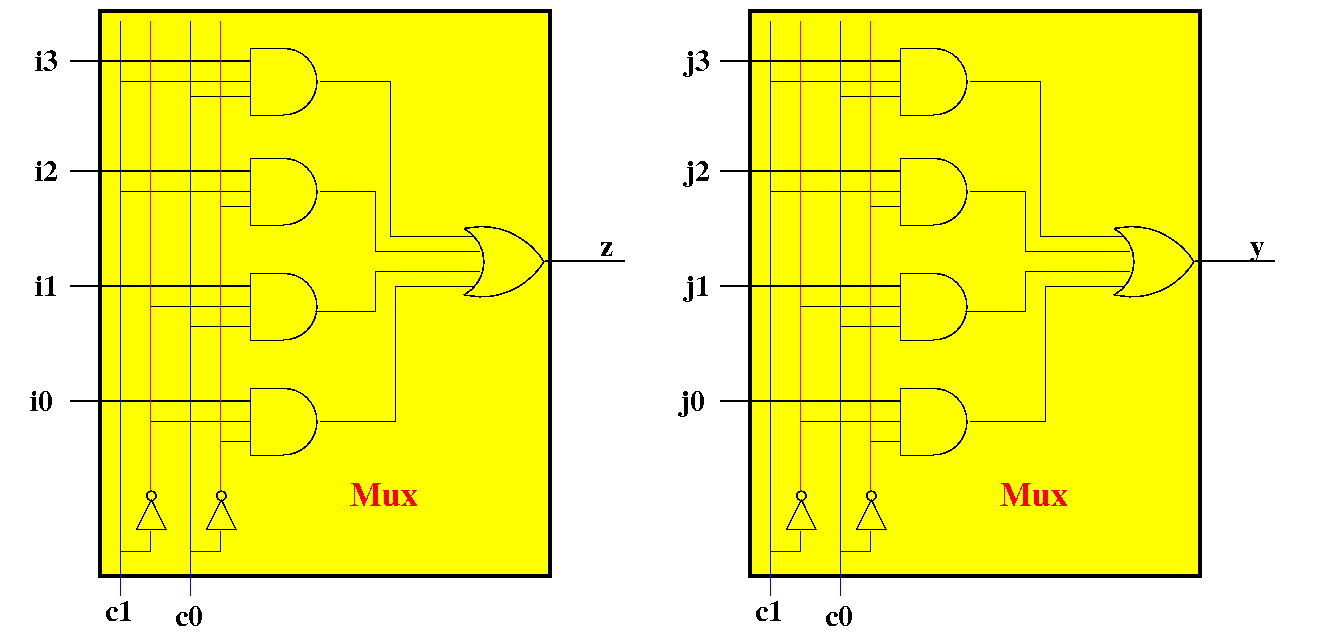
How can we avoid make all the (similar) connections all over again ?
Syntax to define a user-defined circuit component:
Define CompName inSigParams | outSigParams ;
CircuitComponent1;
CircuitComponent2;
....
....
Endef;
|
Syntax to use a (already defined) user-defined circuit component:
CompName coord inputSigs | outputSigs ; |
We have previously studied the multiplexor circuit:

The input signals are:
i3, i2, i1, i0 and
c1, c0
The output signal is:
z
(1): specify the component name, input signal names and the output signal name(s):
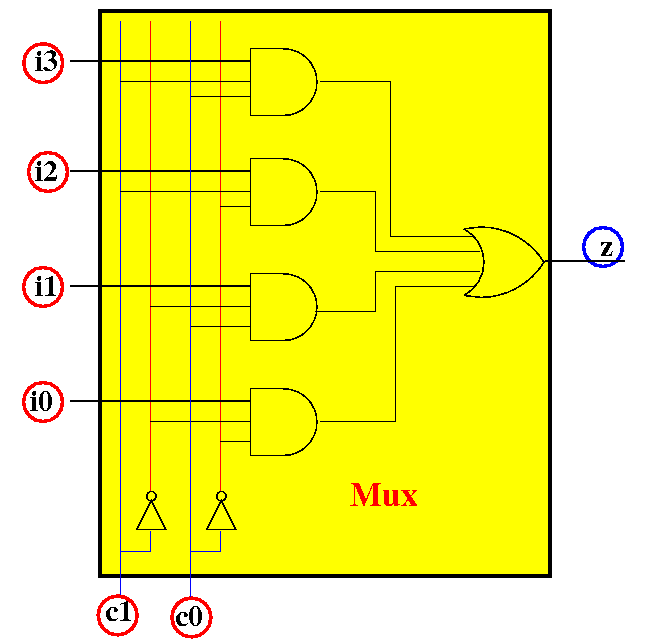
|
|
The input signals are:
i3, i2, i1, i0 and
c1, c0
The output signal is:
z
(2): use the input names as inputs signals to compute the output signal(s):

|
|
(2a): connect the
NOT-gates
(2): use the input names as inputs signals to compute the output signal(s):

|
|
(2b): connect the
first
AND-gates
(2): use the input names as inputs signals to compute the output signal(s):
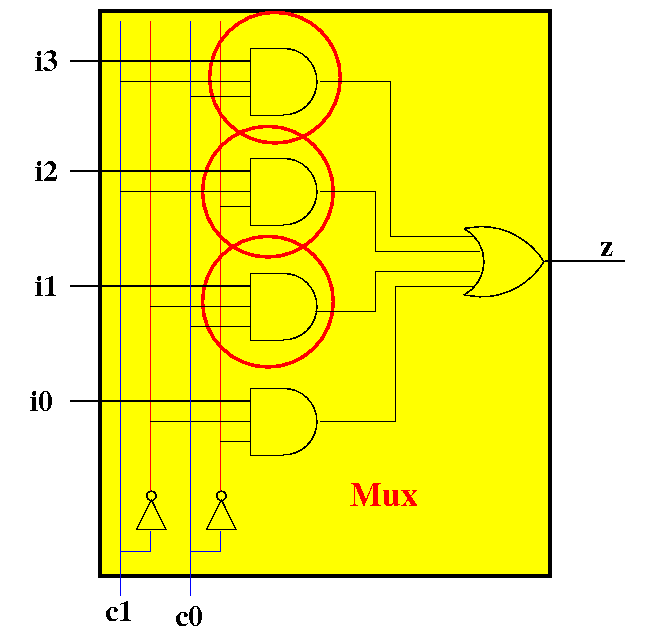
|
|
(2c): connect the
other
AND-gates
(2): use the input names as inputs signals to compute the output signal(s):
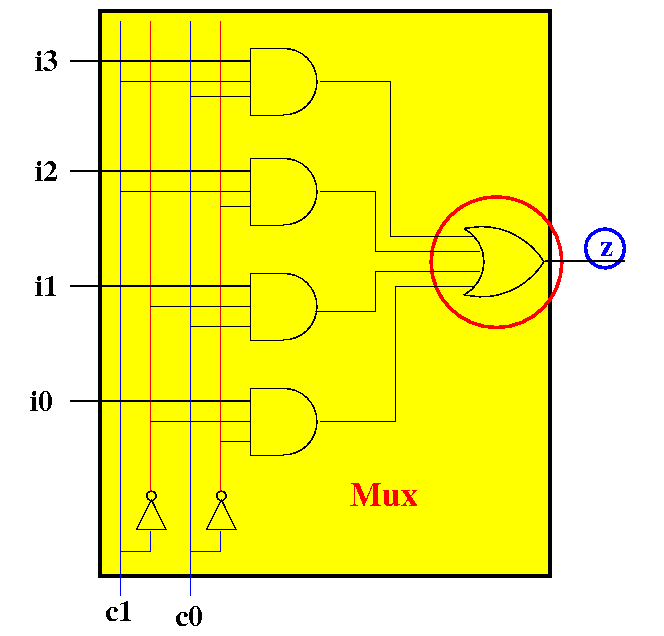
|
|
(2d): connect the
OR-gates and
compute the
output signal z !
DONE !!!
Example: we can instantiate/create two MyMux components as follows:
MyMux aa x3 x2 x1 x0 c1 c0 | o1; // Mux 1 MyMux aa y3 y2 y1 y0 c1 c0 | o2; // Mux 2 |
Mux1 will
multiplex the inputs
x3 x2 x1 x0
to the output
o1
Mux2 will
multiplex the inputs
y3 y2 y1 y0
to the output
o2
Both multiplexors are controlled by the control signal c1 c0
Example EDiSim circuit program with a MyMux component:
Define MyMux i3 i2 i1 i0 c1 c0 | z;
Not fb c1 n_c1;
Not fb c0 n_c0;
And dc i0 n_c1 n_c0 o_0;
And ec i1 n_c1 c0 o_1;
And bc i2 c1 n_c0 o_2;
And ac i3 c1 c0 o_3;
Or cd o_3 o_2 o_1 o_0 z;
Endef;
Switch aa sw3 '3' ZERO;
Switch ba sw2 '2' ZERO;
Switch ca sw1 '1' ZERO;
Switch da sw0 '0' ZERO;
Switch gb sw4 '4' ZERO;
Switch gc sw5 '5' ZERO;
MyMux ab-ec sw3 sw2 sw1 sw0 sw5 sw4 | out;
Probe ce out;
|
DEMO: /home/cs355001/demo/circuits/mux.m
Type control-M to "zoom in" and control-N to "zoom out"
Important note:
|
One 4×1 multiplexor allows us to select one 1 bit number among 4 1 bit numbers:
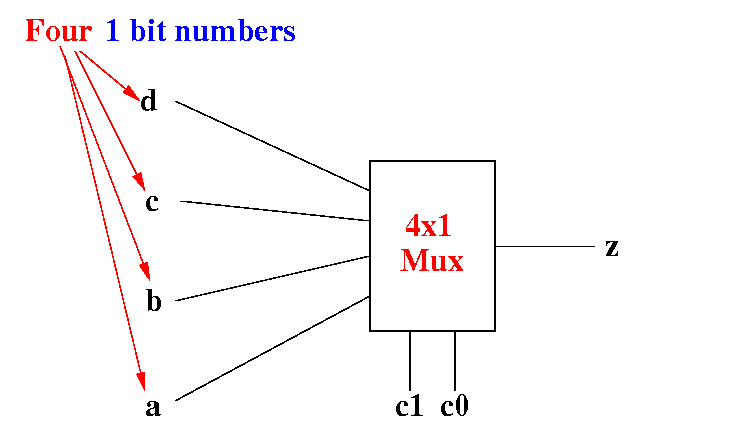
(In general, a 2n×1 multiplexor allows us to choose one 1 bit number among 2n 1 bit numbers)
Suppose we want to select one 2 bits number among 4 2 bits numbers
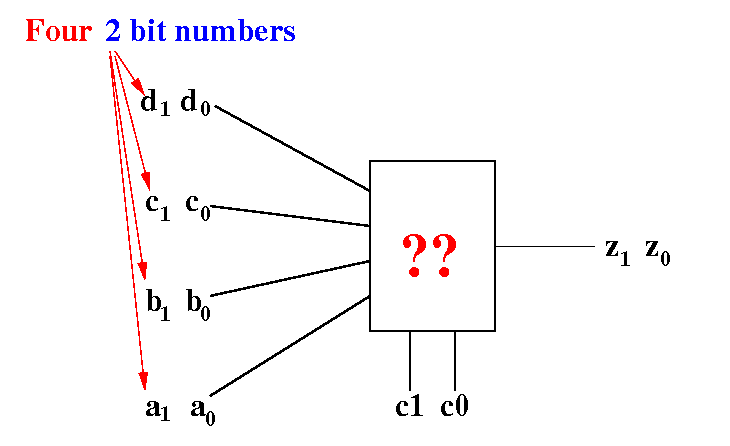
Outputs z1 z0 is equal to one of the inputs d1 d0, c1 c0, b1 b0 or a1 a0 depending on the values c1 c0
Solution: we use one 4×1 multiplexor to select the bit 0 of each number:
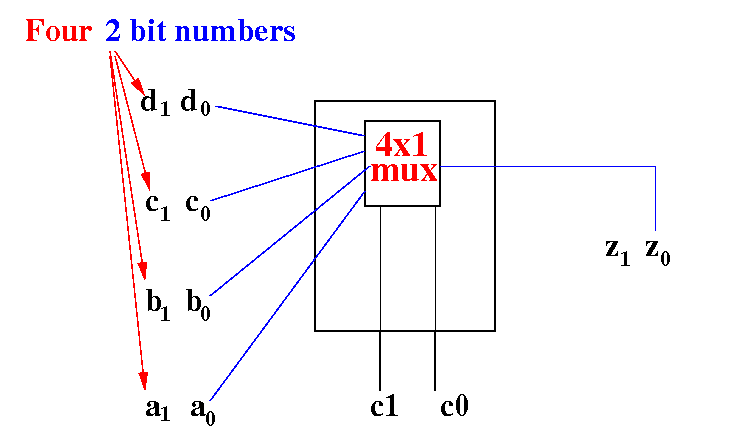
Outputs z0 is equal to one of the inputs d0, c0, b0 or a0 depending on the values c1 c0
Solution: we use another 4×1 multiplexor to select the bit 1 of each number:
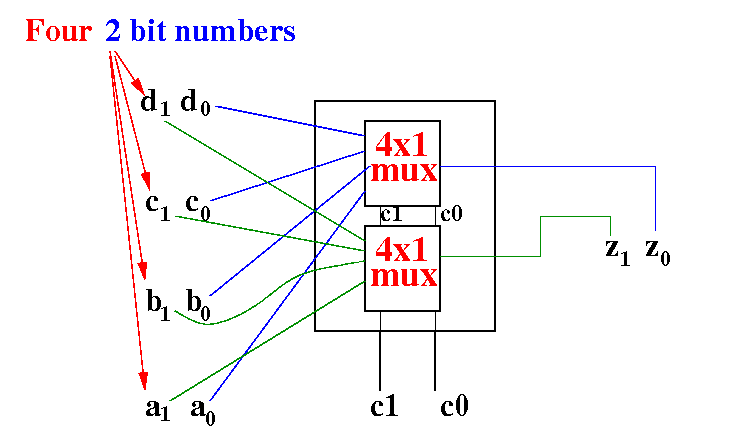
Outputs z1 is equal to one of the inputs d1, c1, b1 or a1 depending on the same values c1 c0
I.e.: the 2 multiplexors work in parallel, each one selecting one bit of the same 2 bits (binary) number !!
DEMO:: /home/cs355001/demo/circuits/parallel-mux